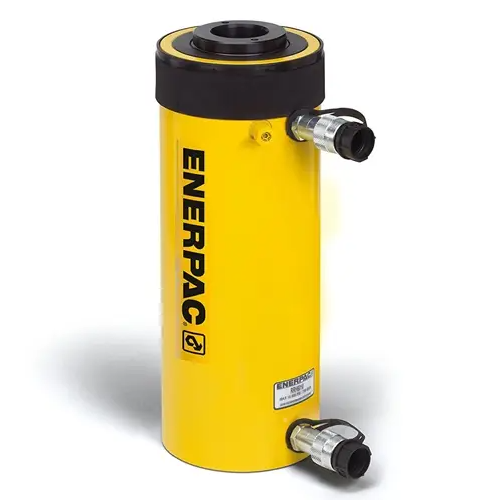Hydraulic Cylinders & Lifting Jacks

- Power your lifting tasks with Double Acting Cylinder Rams. Find reliable options at Ohio Power Tool.
- Get the job done with Single Acting Cylinder Rams. Explore our selection at Ohio Power Tool.
Single-acting and double-acting hydraulic cylinder rams serve different functions in hydraulic systems, each suited to specific applications based on their design and operation. Single-acting hydraulic cylinders are characterized by a single fluid chamber and rely on hydraulic pressure to move the piston in one direction, typically to extend the cylinder. A spring or external force is then required to return the piston to its original position, making these cylinders simpler and often more cost-effective. Common applications for single-acting hydraulic cylinders include lifting equipment, automotive jacks, and other devices where the load only needs to be moved in one direction, such as in dump truck lifting mechanisms where gravity assists in the lowering process.
Double-acting hydraulic cylinders, on the other hand, have two fluid chambers, allowing them to exert force in both extending and retracting movements. This design provides greater control over the motion of the piston, enabling more complex and precise operations. Double-acting cylinders are widely used in industrial machinery, construction equipment, and manufacturing processes where bidirectional force application is necessary. Examples include hydraulic presses, excavators, and manufacturing robots, where the ability to precisely control the movement and position of the cylinder is critical for the task at hand.
The choice between single-acting and double-acting hydraulic cylinder rams from Ohio Power Tool depends on the specific requirements of the project or application. Single-acting cylinders are well-suited for applications requiring straightforward, uni-directional force with a simple design, whereas double-acting cylinders are preferred for more complex systems that require full control over the extension and retraction of the piston. Understanding the operational differences and applications of each type of hydraulic cylinder ensures that engineers, technicians, and machinery operators can select the most appropriate component for their hydraulic systems, optimizing performance and efficiency.



